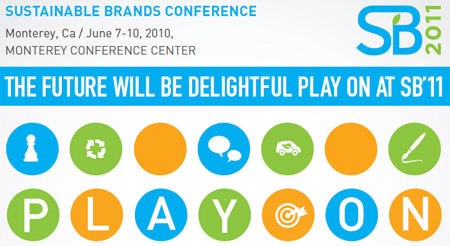Sustainable Brands ’11 provided an early look at results from the 2011 ImagePower Global Green Brands study, one of the largest global consumer surveys of green brands and corporate environmental responsibility. The results were released on Wednesday and will be discussed in depth on Friday, June 10 during ‘The Unfolding Green Brands Landscape: Notes on the Trendline’ presentation.
The survey was conducted by WPP agencies Landor Associates, Cohn & Wolfe, and Penn, Schoen & Berland (PSB), in partnership with Esty Environmental Partners, an independent consulting firm. Polling more than 9,000 people in eight countries (US, UK, China, Brazil, India, Germany, France and Australia), key findings include:
· Consumer interest has expanded to high-ticket items: Now more savvy about how green choices in personal care, food and household products directly affect them and their families, consumers are expanding their purview to higher ticket items like cars and technology. Additionally, consumers in the US and Australia see the energy sector as leading the charge in protecting the environment. By comparison, respondents in Germany and India cite the technology industry as doing the best job of protecting the environment, while the UK credits the grocery store industry. This presents a unique opportunity for these industries (especially auto, tech and energy) to engage with consumers.
· Developing countries place higher value on green brands: For instance, 96% of Chinese consumers say they are willing to spend more on a product because it’s green, with 55% saying they are willing to spend between 11-30% more on a product. But in developed countries such as the US and the UK, only about 20% say they would spend more than 10% extra on a green product.
· The Greenest Brands List: For the first time since the inception of the ImagePower (R) Green Brands study in 2006, the four brands perceived to the greenest are «born green» companies: Seventh Generation; Whole Foods; Tom’s of Maine; Burt’s Bees (see attached list for those rounding out the top 10). These brands are perceived to have a green message and approach that is rooted in their DNA and therefore feels more authentic to consumers.
· When it comes to packaging, being green isn’t enough: Other than price, the two biggest influences on consumer’s purchase decisions are on-package messaging and prior experience with the product. It’s imperative that green brands communicate the real and tangible benefits of their products—in addition to being green—which still feels like a luxury to many consumers.
The survey groups the top 10 list of brands by country. The full presentation can be viewed here.
